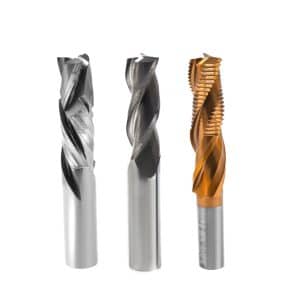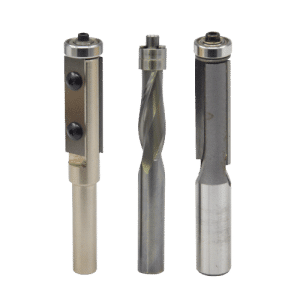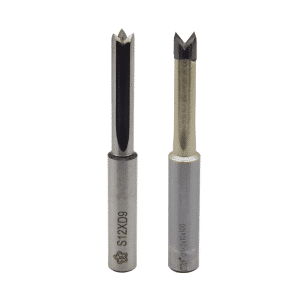Solid carbide milling cutters have the best cutting edge quality of any available design tool. In addition, solid carbide shaving cutters can produce excellent edge cutting results at the highest feed rates of various shaving machines.
Therefore, solid carbide milling cutters are widely used in woodworking projects. So what kind of alloy milling cutter should we use for different woods and cutting effects, and what are the differences between them? We will discuss them one by one below.
Straight Milling Cutter
It adopts straight blade design without spiral blades. Since the contact surface between the blade and the workpiece is large during cutting, greater frictional resistance will occur and the blade will wear easily. They have a shorter service life than helical milling cutters and are suitable for cutting softer materials.
Spiral Milling Cutter
The design of the spiral blade can reduce the resistance caused by contact with the workpiece during cutting. In addition to high-speed cutting, it can also improve processing efficiency. Compared with a straight knife, its service life is longer than that of a straight knife and it is suitable for cutting harder materials.
Top Spinner Milling Cutter
The so-called “upper turning tool” refers to the combination of “right” turning and “right” spiral groove. The top-rotating cutter discharges the wood chips upward in a spiral shape during cutting, which is especially useful when milling grooves or when chip removal is difficult. In some cases, the top-turning knife may pull the workpiece up during the cutting process. Additional fixtures may be required or the depth of cut must be accomplished in stages.
When using the upper rotary knife for penetration cutting, the cutting effect at the bottom of the workpiece will be delicate and smooth. When cutting certain materials, rough burrs are likely to appear on the top of the object being processed.
The top-rotating knife can directly feed or drill vertically downwards, but vertical feeding is easy to chip and is not recommended. We recommend feeding on an inclined track. The inclined trajectory feeding method gradually increases the axial depth of cut to the set axial depth of cut. The milling force gradually increases, so the impact on the tool and spindle is smaller than that of vertical cutting, which can significantly reduce the chipping of the cutting tool.
Down-rotating Milling Cutter
“Down-rotating cutter” refers to the combination of “right” rotating cutting and “left” spiral groove to discharge wood chips from the bottom of the workpiece. The down-rotation cutting method can help secure the workpiece while cutting. The cutting effect is opposite to that of the top-rotating knife, with the top being fine and smooth and the bottom having rough edges.
Downward chip evacuation can sometimes cause clogging problems, especially in concealed milling situations.
When used, the lower rotary knife often completes the cutting of the workpiece in advance, which can greatly improve the stability of the lower rotary knife during trimming. The downward rotating knife is not suitable for vertical downward feeding, and may easily cause the tool to break or resist chipping.
Compound Spiral Cutter
A compound spiral cutter combines an upper rotating blade and a lower rotating blade on the same tool. Simultaneous cutting of the upper and lower blades compresses the workpiece and avoids chips or burrs on the top or bottom of the workpiece.
Composite helical cutters are widely used for cutting double-sided laminates (laminates), but can also be used on natural wood with burrs.
End Milling Cutter
The cutting edge is designed to be smooth, and the cutting results are fine and smooth, suitable for various processing requiring surface smoothness.
Rough Milling Cutter
The cutting edge is designed in a wavy shape, and there will be fine lines during processing, and the cutting result is rougher than that of an end mill. It is mostly used for machining operations that do not emphasize precision. Typically, there will be two machining operations. Roughing cutters are not suitable for low feed rates.
Coarse & Fine Milling Cutter
The blade is designed to be serrated in order to cut the sawdust generated during the cutting process into smaller pieces. This can reduce energy consumption and tool swing during cutting, and is more conducive to sawdust discharge. Rough milling and finishing can be completed at one time without the tool shifting or swinging. This cutter is generally recommended for use when cutting hardwood or dense materials at high feed rates. It is a good compromise tool between end mills and roughing cutters.
Fineness: vertical milling > rough and fine milling > rough milling
Chip breaking effect: rough and fine milling > rough milling > end milling
Depending on the fineness and chip breaking effect, we can choose different solid carbide milling cutters. If you are not sure which milling cutter is suitable for your woodworking project, you can always contact us. We have been specialized in woodworking cutting tools for more than 24 years, with experienced engineers and manufacturer-priced products.




